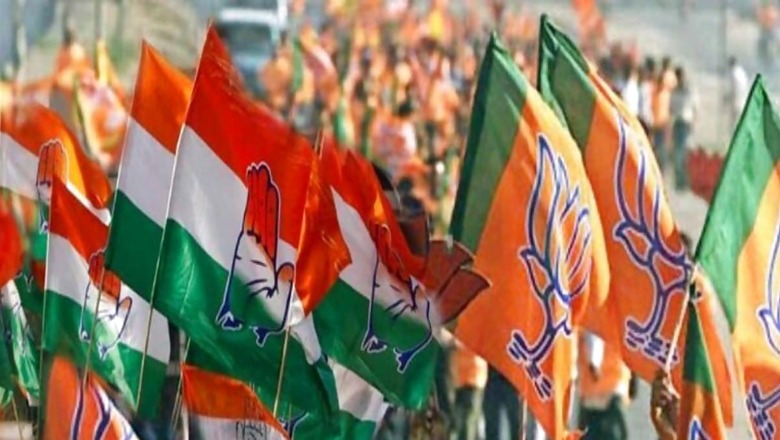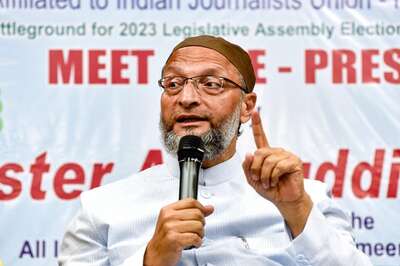
views
Karnataka has been famously described as a psephologist’s nightmare. The reason? Because till the last moment, the hugely diverse electorate does not decide, let alone reveal, whom it will favour at the hustings. Legend has it that almost 20 percent of the voters remain undecided till the last day, some till they enter the voting booth itself. In such a scenario, predicting the results will be foolhardy, if not hazardous. But that is precisely what I shall venture to do.
But, first, let us look at Karnataka’s complex and unpredictable caste and community calculus, with no one in the know of the exact figures. Lingayats, Vokkaligas, Kurubas and other so-called backward communities, Muslims, Schedule Tribes, Christians, and Brahmins. Power has rotated largely between the first three communities. But the last caste census, whose results have been suppressed, indicates that Lingayats and Gowdas (Vokkaligas) have enjoyed disproportionate power, both being much less than their touted numbers. In fact, the Schedule Castes and Muslims are more than the previously accepted figures. Then there are linguistic and out-of-state vote banks besides the Kannadiga majority. Especially in Bengaluru, where Tamils, Telugus, North and North East Indians make up huge numbers.
Now let us bring in the three major regions of the state, with their distinct histories: Coastal Karnataka, South Karnataka, and North Karnataka. Belgaum, Dharwad, and Uttara Kannada coastal Karnataka were part of the Bombay presidency. Dakshina Kannada and Udupi also belong to coastal Karnataka. The major communities here are Bunts, Billavas, Mogaveeras, and Brahmins. South Karnataka is the old heartland of the erstwhile Mysore state. It consists of Mysuru, Mandya, Hassan, Chamarajanagar, and Kodagu. The dominant communities in this region are the Vokkaligas, Lingayats, and a large number of Schedule Castes.
North Karnataka consists of swathes of what used to be the Hyderabad princely state, such as Bijapur, Bidar, and Gulbarga. It also includes Belgaum and Dharwad, with their unresolved border issues with Maharashtra, in addition to Gadag and Haveri. Rich with fertile lands and historic monuments, the communities that dominate this region are the Lingayats, Kurubas, and Schedule Castes and Tribes.
The Bharatiya Janata Party (BJP) and the Congress, the two major political parties in Karnataka, are in a neck-to-neck battle in the upcoming assembly elections. Voters will cast their ballots on May 10th, with the results expected to be declared on May 13. Both parties, over the last two decades, have strong support bases. The Congress, till 1983, ruled uninterrupted; since then, it has won intermittently. The BJP made more recent inroads into the state, the first in its southwards push. They have been in power for nine years.
In the last Assembly elections of 2018, the BJP emerged as the single largest party, winning 104 seats out of 224 seats. The Congress won 80 seats, though it had polled a higher percentage of votes. The BJP, despite being the single largest party, fell short of the majority mark of 113. As a result, the Congress and the Janata Dal (Secular) entered into an “unholy alliance,” forming a coalition government, with the support of other parties.
But in the general elections of 2019, the BJP struck back with unexpected force. It won all 25 Lok Sabha seats in Karnataka, a record for the party. That showed overwhelming support for the repeat Prime Ministerial candidate, Narendra Modi. As if on cue, in 2019, the BJP also formed the government in Karnataka. Then Chief Minister HD Kumaraswamy was forced to resign after several Congress and JDS legislators crossed over. He lost the floor test, having lost his majority. The Governor, Vajubhai Vala, invited the BJP, already the largest party in the state, to form the government.
BS Yediyurappa, popularly known as BSY, though over 76 years of age, which is against the BJP retirement norm of 75, was sworn in as Chief Minister for the fourth time in July 2019. The fifteen days given to him to prove his majority proved ample. He won with 105 votes, not needing the magic figure of 113, because of several absentees or disqualified members. The governor, a former member of the BJP, was predictably accused of being partisan.
But as far as the BJP was concerned, it was sweet revenge. But BSY at 79, too, had to make way in 2021, after the Covid-19 pandemic, for his own protégé and fellow-Lingayat, Basavaraj Bommai. The latter, Karnataka’s 23rd CM, was also the son of former Janata Dal Chief Minister, SR Bommai. For the statistically inclined, in its 75 years of history since 1947, the state has had 23 chief ministers of whom only three — all of them from the Congress — could complete their five-year terms. They are S Nijalingappa, D Devaraj Urs, and Siddaramaiah, who is once again a contender.
Now to the all-important question: who will win? I will try to answer this in greater detail in the next column, but my basic guess is none will get a clear majority, crossing the magic number of 113. It will be a very close contest between the incumbent BJP and the restive if not resurgent Congress. But the dark horse and the kingmaker remain the JD(S), led by the father-son duo, HD Deve Gowda and HD Kumaraswamy. The good news for the BJP is that as the polling day nears, they are inching ahead in the race, partly due to the Congress’ own follies — especially the Bajrangi boomerang.
[To be concluded]
The writer is an author, columnist, and professor at Jawaharlal Nehru University. Views expressed are personal.
Read all the Latest Opinions here



















Comments
0 comment